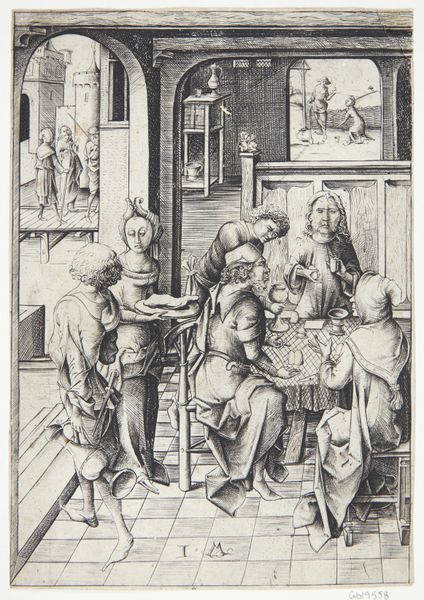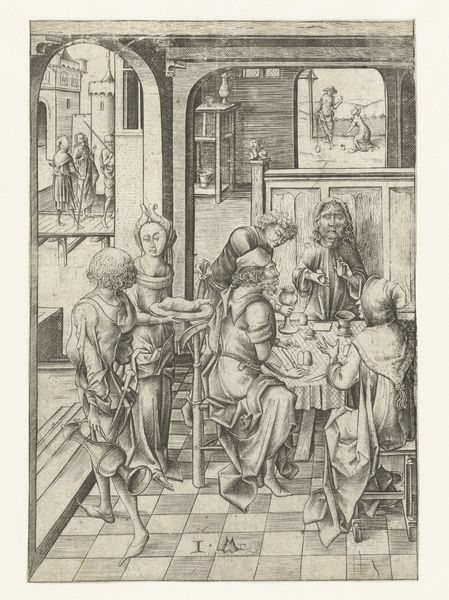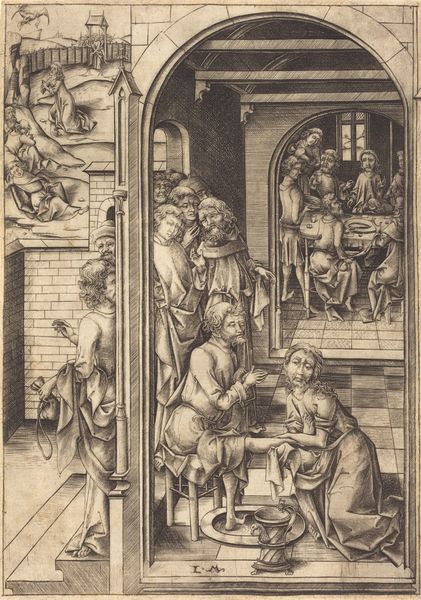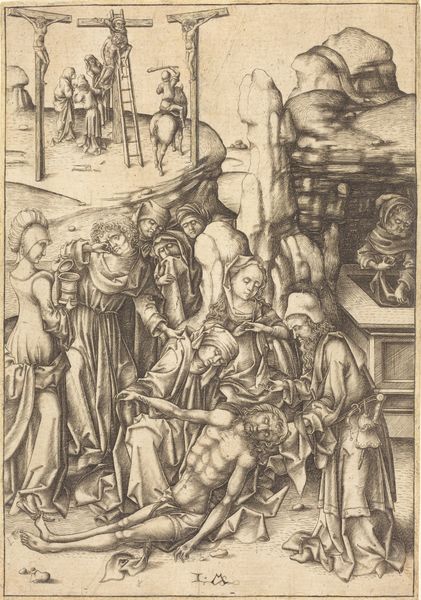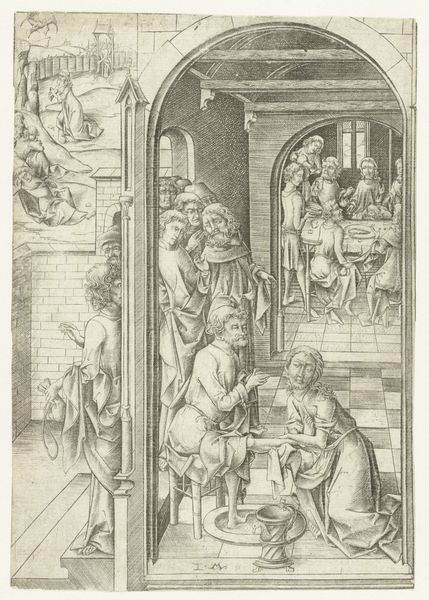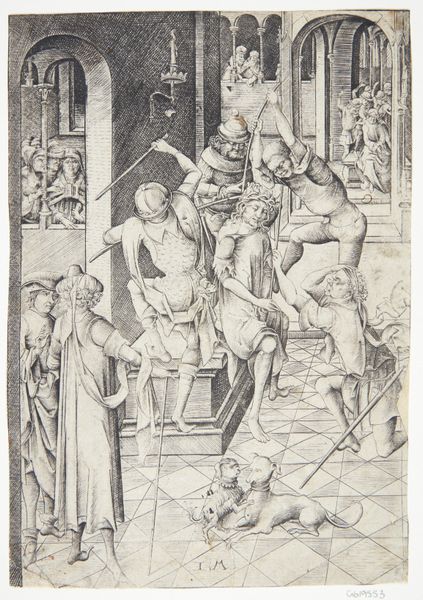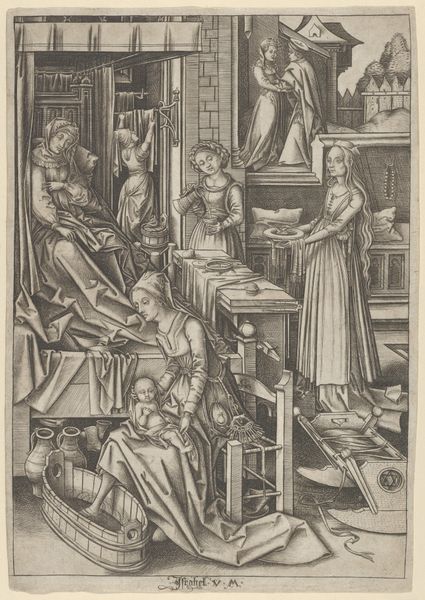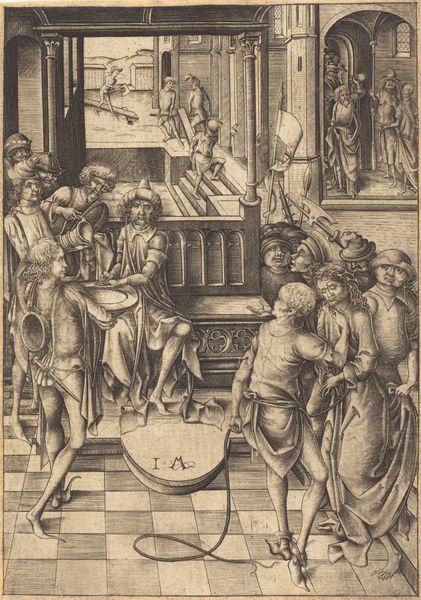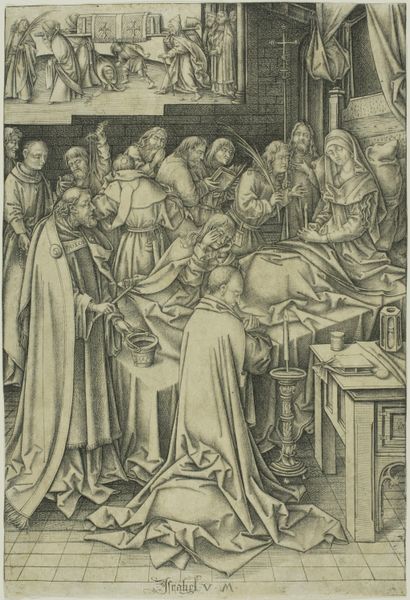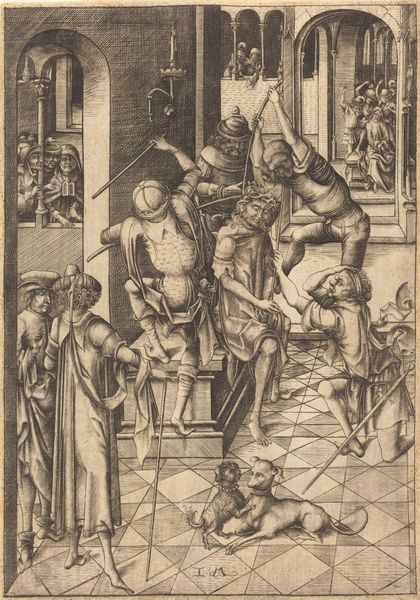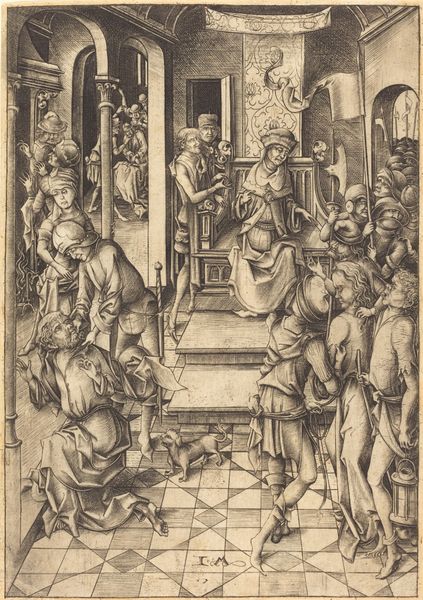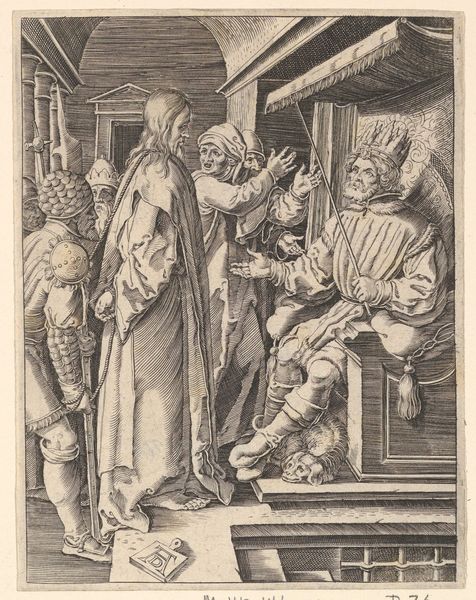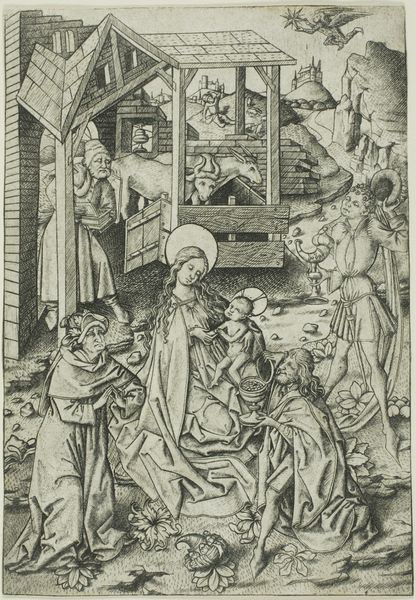
drawing, print, paper, engraving
#
drawing
#
medieval
# print
#
landscape
#
paper
#
11_renaissance
#
genre-painting
#
engraving
Dimensions: 207 × 145 mm (sheet trimmed within platemark)
Copyright: Public Domain
Editor: Here we have "Christ at Emmaus," an engraving printed on paper by Israhel van Meckenem. The density of the composition is striking. What's fascinating to you about this particular print? Curator: Considering Van Meckenem's prints as commodities helps us understand their creation and distribution. How accessible would an engraving like this have been in the late 15th century? Was it catering to a wealthy clientele or a broader audience? Think about the materials: paper, ink, the metal plate used for engraving – these were all goods produced by laborers. Editor: So you're saying the materials and production process shape our understanding of its cultural role? Curator: Precisely. Engravings like this one weren't just images; they were objects embedded in a network of commerce and labor. The level of detail suggests skilled craftsmanship, a significant investment of time. Notice how he creates depth. What can you infer about his use of different tools to produce distinct lines and textures? Editor: I see, almost like he’s showing off what he could do with his tools. This reframes the image as a display of artisanal skill rather than just a religious scene. Curator: Exactly! We can speculate how many impressions were made. Was it a limited run, increasing its value, or were they striving for wider distribution? The clues are in the materials and techniques used. Examining the artist’s signature, we gain insight to the engraving, itself an object produced within the confines of material constraints, labor, skill and commerce. What do you take away from this different analysis? Editor: It highlights how studying the tangible aspects—the materials and production—opens a window into the economic and social conditions of the time, completely changing the narrative around art's value.
Comments
No comments
Be the first to comment and join the conversation on the ultimate creative platform.
